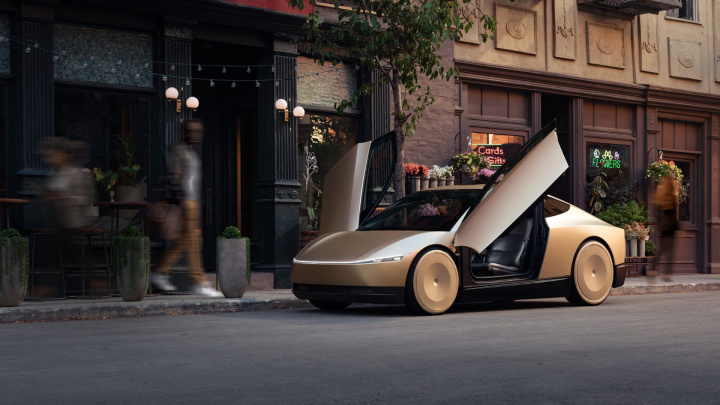Tesla CyberCab Robotaxi
Tesla recently unveiled its long-awaited Cybercab robotaxi at the "We, Robot" event, held at the Warner Bros. Discovery studio lot. The presentation showcased a fleet of 20 sleek, futuristically designed, self-driving vehicles, signaling the company's readiness to advance towards a fully autonomous future.

Another of Elon Musk's ambitious dreams is becoming reality, aiming not only to transform urban transportation but potentially opening a new chapter in the autonomous vehicle market. Below, we detail the significance of the event and the Cybercab, along with the anticipated challenges.
The Cybercab: Futuristic Design and Full Autonomy
The Cybercab features a design reminiscent of a smaller Cybertruck, distinguished by its coach doors (often referred to as suicide doors) and the absence of traditional driving controls like a steering wheel and pedals. This new robotaxi is designed to be fully self-driving, representing a bold step by Tesla towards complete autonomy. At the presentation on the Warner Bros. Discovery studio lot, Tesla showcased not just a single prototype but an entire fleet of 20 vehicles, demonstrating the company's readiness for large-scale deployment of the technology. Elon Musk's vision of AI-driven urban transportation is increasingly becoming a reality.
Event Highlights
The "We, Robot" event took place on October 10th at 7 PM PT on the famous Warner Bros. Discovery studio lot in Burbank, California. Elon Musk kicked off the event with a brief demonstration drive along the studio's manicured backlot streets, highlighting the Cybercab's smooth operation. The location provided a unique atmosphere, being the backdrop for iconic films like "Batman" and TV shows like "Friends." However, some critics, such as Patrick George from InsideEVs, questioned the demonstration's realism, as the vehicles were operated in a controlled environment rather than facing real-world traffic conditions.
Tesla's New Business Model Built on Autonomous Transportation
The Cybercab reveal is closely tied to Elon Musk's vision of a future dominated by autonomous transportation. Tesla plans to establish a two-pronged business model: Firstly, it will operate its own fleet through a dedicated robotaxi app. Secondly, it will allow Tesla owners to add their vehicles to the ride-hailing network, similar to how platforms like Uber or Airbnb operate. This enables owners to earn income when their vehicles are not in use, and this new model could allow Tesla to diversify beyond traditional annual car sales, creating new revenue streams through ride-sharing.
Challenges Facing the Cybercab
Significant hurdles for Tesla include regulatory challenges, as the Cybercab's design—lacking a steering wheel and pedals—does not comply with current vehicle safety standards. Furthermore, the company's driver-assistance systems, Autopilot and Full Self-Driving (FSD), have faced multiple federal investigations linked to serious and fatal crashes. For the Cybercab to achieve widespread adoption, Tesla must prove the safety and reliability of its technology, especially under real-world traffic conditions. Additionally, the company will need to navigate numerous state and federal regulations, particularly in California, which has some of the strictest approval processes for autonomous vehicles.